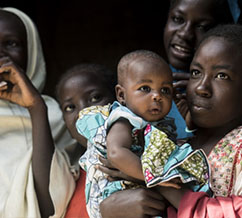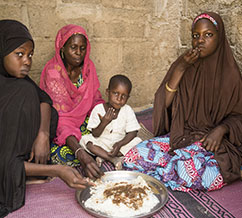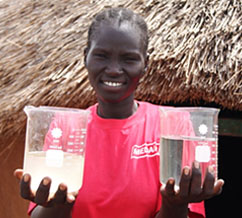Populations across northeastern Nigeria continue to experience acute food insecurity, high acute malnutrition levels, and increased risks of excess mortality, according to the USAID-funded Famine Early Warning Systems Network (FEWS NET). The onset of the May-to-October rainy season—which complicates road access—could potentially further limit humanitarian access and relief operations in some areas of the region. The UN and international non-governmental organizations (NGOs) in northeastern Nigeria are developing contingency plans for the rainy season and expanding storage capacity in Borno State to facilitate the delivery of food and other humanitarian assistance to vulnerable populations.
Conflict in Eastern Equatoria, Jonglei, Upper Nile, and Western Bahr el Ghazal states generated additional internal displacement, as well as population movements into neighboring countries, during the month of April. Attacks on aid workers, which resulted in the deaths of four USAID partner employees, prompted humanitarian organizations to relocate staff from conflict-affected areas and temporarily suspend relief operations.
Vulnerable populations in Somalia, southeastern Ethiopia, and northern Kenya continue to face life-threatening acute food insecurity, following delayed and erratic seasonal rains across the Horn of Africa, according to the USAID-funded Famine Early Warning Systems Network (FEWS NET). As of early May, April-to-June gu rains had begun in parts of Somalia’s semiautonomous regions of Puntland and Somaliland, while Lower Juba, Lower Shabelle, and coastal areas of Galgadud and Mudug regions had not yet received rains, according to the UN. In addition, central and eastern Ethiopia remained dry due to below-average February-to-June belg rainfall, and the delayed onset of March-to-May long rains had exacerbated dry conditions in agricultural and pastoral areas of Kenya, according to FEWS NET.
International donors participate in high-level pledging event for Yemen crisis on April 25. US Government agencies commit an additional $94 million in humanitarian funding for the Yemen response. UN officials warn parties to conflict against launching a military offensive in the vicinity of Al Hudaydah Port, noting humanitarian concerns.
March 2017 marks two years since the Kingdom of Saudi Arabia-led Coalition began airstrikes on Al Houthi and allied forces in Yemen. An estimated 17 million people in Yemen are experiencing acute levels of food insecurity—an increase of 20 percent since June 2016.











Comment
Make a general inquiry or suggest an improvement.